From Murder, Inc. to the Chicago Outfit, these colorized images show the early days of organized crime as they really were.
The Italian mob’s prominence at the heart of America’s criminal underbelly has been well chronicled and glamorized by countless movies, television shows, and books throughout the years — but the true story of how the Mafia came to be such a powerful force in the United States is even more tantalizing than the Hollywood portrayals.
In fact, some of the 20th century’s most notable — and notorious —figures were members of the American mob, and they helped shape the country as it is today, for better or worse. See some of the most striking pictures from the early days of organized crime in the photo gallery below, and then learn more about the fascinating history of the American Mafia.







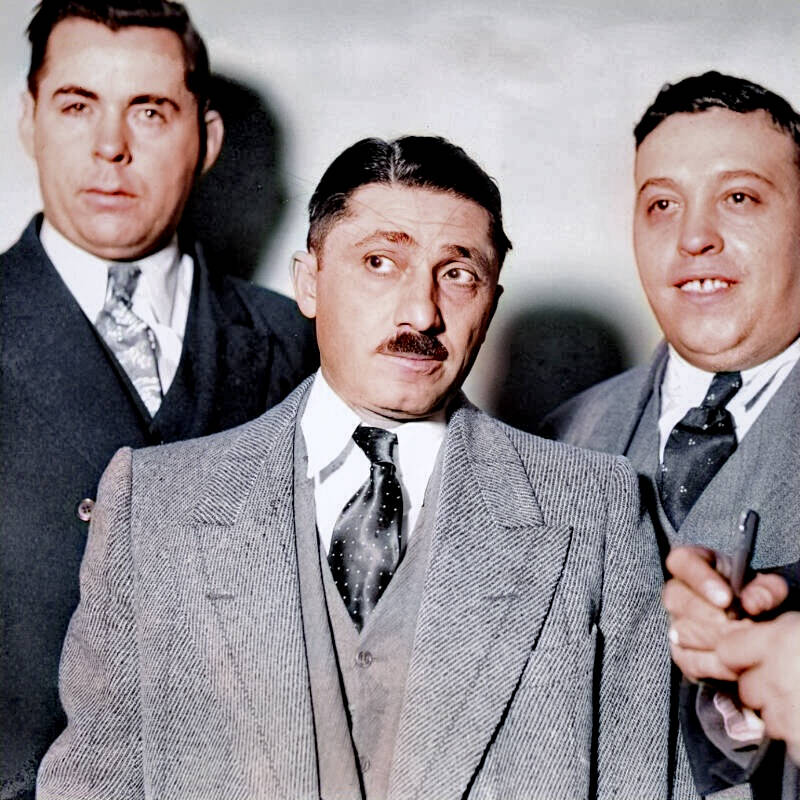












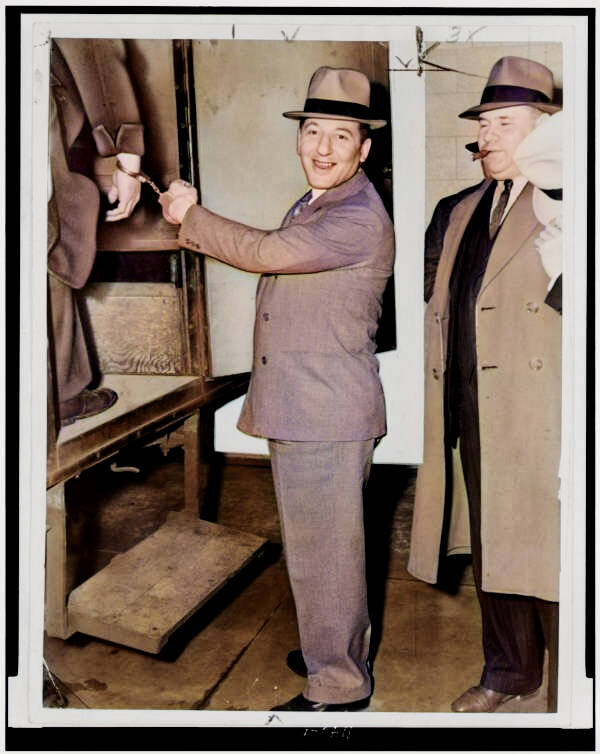







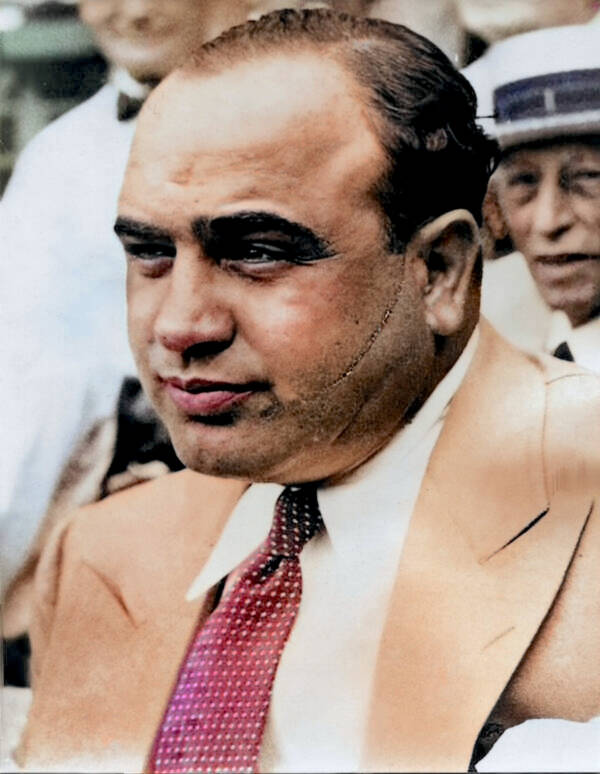


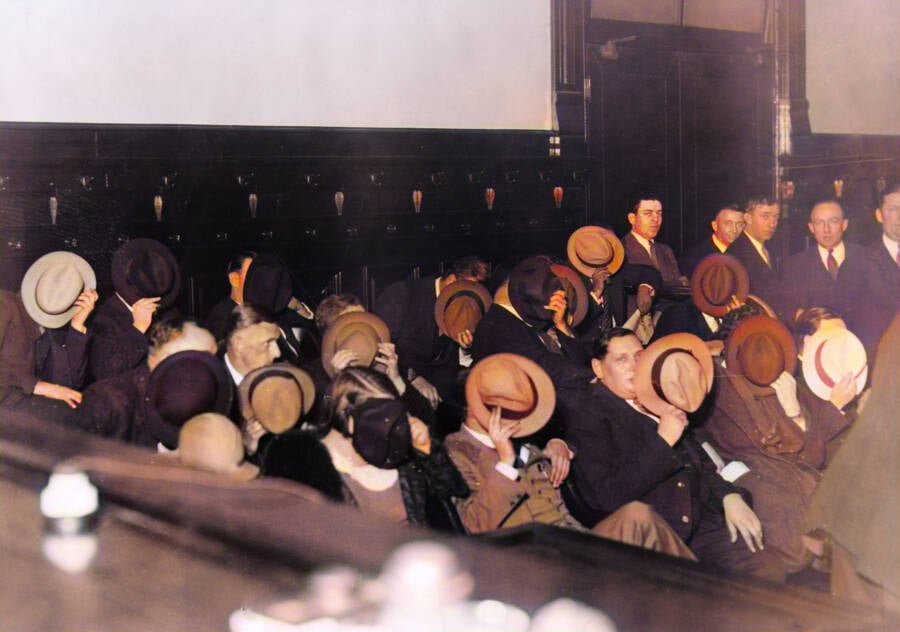


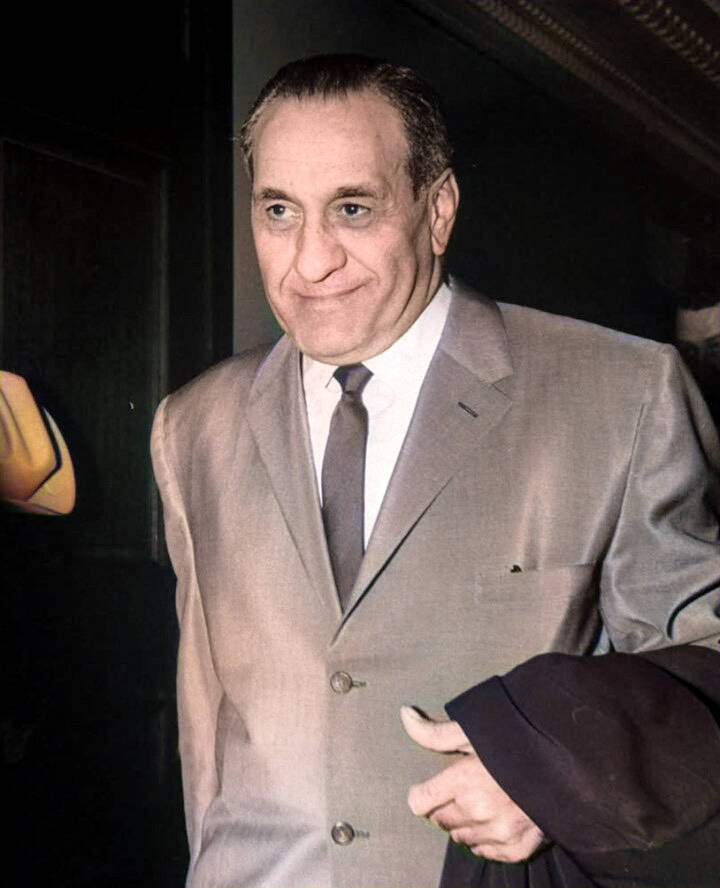

Like this gallery?
Share it:
And if you liked this post, be sure to check out these popular posts:
1 of 37
Mafia hitman Tomasso Petto (second from the left) being escorted by police in New York in 1903. Petto was a member of the Morello family, one of the earliest crime families in the United States. The organization became infamous in the early 1900s for butchering an associate, stuffing his bloody corpse in a barrel, and abandoning the barrel on a street.
2 of 37
Known as the "Lord High Executioner," Albert Anastasia first made a name for himself in crime boss Joe Masseria's gang in the 1920s before becoming the head of the murder-for-hire organization Murder, Inc. in the 1930s.Facebook
3 of 37
John "Sonny" Franzese, one of the longest-working mobsters in history, with a career spanning about eight decades. An underboss for the Colombo crime family in New York City, Franzese was arrested multiple times throughout his life, and he was 100 when he finished serving out his final prison sentence in 2017. He then enjoyed about three years of freedom before dying at age 103.Jim Mooney/NY Daily News Archive via Getty Images
4 of 37
One of the best-known crime bosses of New England, Raymond Patriarca began his criminal career during the Prohibition era, smuggling illegal alcohol and carrying out armed robberies. He became even more powerful in the 1940s, allegedly running countless illegal activities in the New England area, from trafficking cocaine to smuggling immigrants to plotting murders. And he maintained control over the region for more than 25 years.Bettmann/Getty Images
5 of 37
Attendees at a Mafia Commission Meeting in Cleveland, Ohio. 1928.Reddit
6 of 37
The Millen-Faber gang of Massachusetts: Murton Millen, Irving Millen, and Abraham Faber. After killing two police officers while robbing a Needham bank, they became the first people to be found guilty of murder by machine gun in the state. They were executed for this crime in 1935.
7 of 37
Norma Brighton Millen, the bride of Murton Millen, pictured with her ill-fated husband and his brother. Norma was also arrested following the violent Needham bank robbery, but she was only found guilty of being an accessory to the crime and sentenced to a little over a year in jail.
8 of 37
Frank Nitti (center), the right-hand man and the eventual successor of the legendary Chicago mobster Al Capone.Chicago Sun-Times/Chicago Daily News collection/Chicago History Museum/Getty Images
9 of 37
Mobster Benjamin "Bugsy" Siegel, pictured in 1940, after he was taken in for questioning about a gangland murder in Hollywood.Bettmann/Getty Images
10 of 37
Charles Binaggio, a Kansas City crime boss who ran the city's underworld for much of the 1940s.Public Domain
11 of 37
Charles "Mad Dog" Gargotta, a top enforcer in the Kansas City crime family in the 1940s. Public Domain
12 of 37
Louis Clementi (left), a gunman for Al Capone, and Philip Mangano, a member of one of New York's Five Families, in Chicago. Circa 1920s.Chicago Sun-Times/Chicago Daily News collection/Chicago History Museum/Getty Images
13 of 37
Chicago gangsters lined up in jail, from left to right: Mike Bizarro, Joe Aiello, Joe Bubinello, Nick Manzello, and Joe Russio. Circa 1920s.Chicago History Museum/Getty Images
14 of 37
The murder scene of Harry Millman, one of the most prominent members of Detroit's Jewish-run Purple Gang. Millman was known for his hatred of Italian mobsters — until he was gunned down at a deli in 1937, likely by members of New York's Murder, Inc.Bettmann/Getty Images
15 of 37
Known as the "Two Tonys," Tony Trombino and Tony Brancato were two gangsters out of Kansas City who later connected in the Los Angeles underworld and became partners in crime there. But then, they robbed the Flamingo hotel in Las Vegas — which happened to be under mob control. And before long, the Two Tonys were brutally gunned down in 1951.University of Southern California/Corbis via Getty Images
16 of 37
The leader of the New Orleans mob, Carlos Marcello (center), entering the city's Masonic Building to meet with U.S. Immigration officials in 1961. Since Marcello was born to a Sicilian family in Tunisia and never officially applied for citizenship, he spent many years fighting deportation from the United States.Bettmann/Getty Images
17 of 37
Brooklyn dock boss Tony Anastasia, left, making a "victory" gesture on a staircase that leads to a pier union meeting in 1954.Bettmann/Getty Images
18 of 37
One of the most feared hitmen for Murder, Inc., Abe "Kid Twist" Reles, sitting at the District Attorney's office in Brooklyn. November 1941.Irving Haberman/IH Images/Getty Images
19 of 37
Known as the "Numbers Queen," Stephanie St. Clair built a gambling empire in Harlem in the 1920s. When she was arrested in 1929, she swore revenge on the police officers who'd interrupted her cash flow — and ended up getting 13 corrupt cops suspended thanks to her testimony before a commission.Twitter
20 of 37
Louis "Lepke" Buchalter (center) was the founder of the murder-for-hire organization Murder, Inc. Bettmann/Getty Images
21 of 37
Born and raised in New York, Buchalter entered a life of crime early on and had already served two prison terms by the time he was 22. Public Domain
22 of 37
An associate once said of Buchalter, pictured here in court (facing front), "Lep loves to hurt people." After being convicted of multiple crimes, including narcotics conspiracy and murder, Buchalter was sentenced to death by electric chair, meeting his end at the Sing Sing State Prison in 1944.
23 of 37
Known as "The Clutch Hand" for his atypical right hand (which was the result of a birth defect), Giuseppe Morello was the founding boss of New York's Morello crime family, and later an adviser to crime boss Joe Masseria — which also made him an early victim of Masseria's gang war in 1930.Public Domain
24 of 37
Sometimes called the Buffalo Mafia, the Magaddino family is said to control organized crime not only in Western New York but also in parts of Pennsylvania and Ontario, Canada. Though some investigators believe that the Buffalo mob's reign ended in the late 20th century, others aren't so sure.Reddit
25 of 37
Meyer Lansky was known as the "Mob's Accountant" for his financial genius — and for helping to hide the Mafia's wealth. He first rose to notoriety in early 20th-century New York alongside other underworld figures like Bugsy Siegel and Lucky Luciano. And by the 1930s, Lansky was helping Luciano and others build the national crime syndicate.Bettmann/Getty Images
26 of 37
One of the most fearsome crime bosses in Los Angeles, Mickey Cohen was also something of a Hollywood celebrity, befriending famous singers and dating actresses, all while brutally controlling nearly all of the drugs, prostitution, gambling, and even the politics in the city in the late 1940s and 1950s.Twitter
27 of 37
Joe Masseria, one of the biggest figures of the New York mob's early days. In 1930, he declared war on his rival Salvatore Maranzano, leading to dozens of deaths on both sides. The war only came to an end when Masseria was betrayed by his then right-hand man Lucky Luciano in 1931 — and gunned down.Public Domain
28 of 37
Vincent "Mad Dog" Coll, an Irish American gangster who rose to notoriety in 1920s New York. Known for kidnapping other gangsters and holding them for ransom, Coll became especially infamous when an innocent child was accidentally shot during one of his tumultuous kidnapping schemes.Public Domain
29 of 37
Legendary Chicago mobster Al "Scarface" Capone got his nickname due to his facial scars — which he received after he was slashed during a bar fight — but he actually hated this name and preferred to be called the "Big Fellow" or "Snorky" instead.PhotoQuest/Getty Images
30 of 37
Dutch Schultz, a Jewish American gangster waiting for the verdict in the government's income tax case against him in New York in 1935. Though he was found not guilty, Schultz was killed shortly after this photo was taken for trying to order a hit on a prosecutor —which allegedly upset other members of the criminal underworld who wanted to stay out of the eye of the law.
31 of 37
Frank Costello, the New York mob boss who never carried a gun, testified at a Senate hearing on organized crime without the protection of the Fifth Amendment in the early 1950s, and died a free man at age 82 despite an attempted assassination. Bettmann/Getty Images
32 of 37
Spectators at Al Capone's tax evasion trial in 1931 covered their faces to remain anonymous — and to avoid any retribution from Capone's associates. Capone would be found guilty in October of that year and later sentenced to 11 years in prison, though he only served seven years and six months.ullstein bild/Getty Images
33 of 37
After building a fearsome reputation as one of history's most legendary mobsters, Lucky Luciano was reportedly in talks with film producer Martin Gosch to make a movie about his life. However, Luciano died of a heart attack at a Naples airport in 1962, shortly before he was about to be arrested due to his connection to an international narcotics ring. He was 65 years old.
34 of 37
The result of the St. Valentine's Day Massacre, a hit believed to have been orchestrated by Al Capone, which involved the murder of seven members and associates of Chicago's North Side Gang. During the massacre, four men disguised as two cops and two wealthy civilians walked inside the gang's warehouse in Chicago, rounded up the seven men, lined them up against a wall, and promptly murdered them all with Tommy guns.
35 of 37
Tony "Big Tuna" Accardo ruled the Chicago Outfit for more than 40 years, and only spent one night in jail. Though Accardo started out as a low-ranking associate of Al Capone, he later became Scarface's bodyguard, and then established his own street crew. Eventually, he took control of the entire Chicago mob — and became its "genuine godfather."
36 of 37
Tony Accardo was eventually found guilty of tax evasion — just like his predecessor Capone — but the only night he spent in jail was when he was picked up for questioning in a gambling case. Accardo's guilty conviction in the tax evasion case was later appealed as well, and in a retrial, he was acquitted of the crime and free to go.
37 of 37
Like this gallery?
Share it:




36 Photos From The Early Decades Of Organized Crime In America, Brought To Life In Stunning Color
View Gallery
Inside The Origins Of The American Mafia
It's quite likely that the American Mafia would never have existed — at least, not in the form we recognize it today — if it weren't for Salvatore Maranzano, a Sicilian man who once dreamed of being a Catholic priest.
But as the saying goes, the best-laid plans of mice and men often go awry, and rather than becoming a priest, Maranzano became a central figure in New York's criminal underworld as he hungered desperately for more power, just like the man who inspired his nickname, Julius Caesar.
Back in Sicily, Maranzano had already made a name for himself as a criminal. But when he moved to New York after World War I, his criminal career really took off, according to Britannica. He got involved with illegal gambling and bootlegging, all while forging alliances with other gangsters.
At the time, Prohibition was the law of the land — and the nationwide ban on the sale of alcohol proved to be not just one of history's biggest failures, but also one of the most lucrative opportunities for American mobsters.
So, as Maranzano and others were building their empires in New York, a collection of criminals in Chicago were likewise making a fortune bootlegging — and there are perhaps none more famous than Al Capone.

Bettmann/Getty ImagesAl Capone on the train carrying him to a federal penitentiary in Atlanta after he was found guilty of tax evasion in 1931.
Capone rose through the ranks as mobster Johnny Torrio's right-hand man, but when Torrio retired in 1925, Capone took over as the leader of the Chicago crime syndicate, giving him near-total control over the city's gambling, prostitution, and bootlegging operations.
His reputation in the Windy City was controversial, to say the least. He was a wealthy crime boss with an empire at his command —but he also opened one of the first soup kitchens during the Great Depression.
And of course, Capone likely orchestrated one of the most infamous and bloody mob hits of all time: the St. Valentine's Day Massacre.
But while Capone — and eventually, his own right-hand man, Frank Nitti — ran the show in Chicago, a violent gang war broke out in the New York underworld as various power-hungry leaders struggled for control.
The Bloody Castellammarese War And The Transformation Of The American Mob
In the beginning, the New York criminal underworld was anything but organized. There was a power vacuum that needed filling, and two men sought to do it: Salvatore Maranzano and his rival gangster Joe Masseria. And thus, the bloody Castellammarese War broke out in 1930.
Each man had a number of allies among the other underworld figures, who were trying to take each other down to put their man at the top of the chain.
But ultimately, it was Masseria's own right-hand man, Charles "Lucky" Luciano, who did him in, orchestrating Masseria's murder and putting an end to the gang war in 1931. This cemented Maranzano as the "boss of all bosses" in the city — and ushered in the so-called "Golden Age" of the Mafia.

Public DomainCharles "Lucky" Luciano, Joe Masseria's former right-hand man who ultimately betrayed him.
At first, Maranzano and Luciano seemed to share a similar vision of a more organized crime network, leading to the creation of the Five Families of New York, each of which had specific territories under their control.
But absolute power corrupts absolutely, and Luciano once again went after a supposed ally, putting together a small group of associates to march into Maranzano's office and kill him, making Luciano the leader of the Mafia.
Under Luciano's reign, disputes among the Five Families were more often resolved with negotiation than violence (though there was still some violence, of course). But Luciano's main goal was profit above all else, and it seemed that with him in charge, the Mafia was unstoppable.
But then, Luciano was deported to Italy in 1946, and another violent power struggle saw Vito Genovese rise to power. And the occasion meant to consolidate his leadership spelled the end of the Mafia's Golden Age.

Bettmann/Getty ImagesVito Genovese's ill-fated meeting of mob bosses marked the beginning of the end for the Golden Age of the Mafia.
In 1957, Genovese put out a call for over 100 of his fellow mobsters to come to the rural estate of his friend, Joe Barbara, in Apalachin, New York, to formalize his power and to streamline some important business decisions.
Unfortunately for Genovese, a row of conspicuous Cadillacs parked next to each other on a rural road caught the attention of New York State Police Detective Ed Croswell, who had been keeping a close eye on Barbara for well over a decade, according to The Rise of the Mafia.
Noticing that the cars had license plates from half a dozen different states, and later learning that Barbara had ordered 200 pounds of meat, Croswell knew that this was his chance to catch some of the mob's biggest figures. He called for backup, blocked off any nearby roads, and waited.
The police raid ultimately led to more than 60 arrests, and even though the convictions were later overturned, the shocking incident made the American Mafia's existence known to the world — despite FBI director J. Edgar Hoover's earlier claims that there was no such thing.
Genovese was ultimately let go by the authorities after the raid, but with all the publicity surrounding the meeting, it put the nail in the coffin for his leadership — and eventually, the Golden Age of the mob as a whole.
After looking through these colorized organized crime photos, check out these colorized photos of Victorian London. Then, see 99 more colorized historical photos that breathe new life into the past.